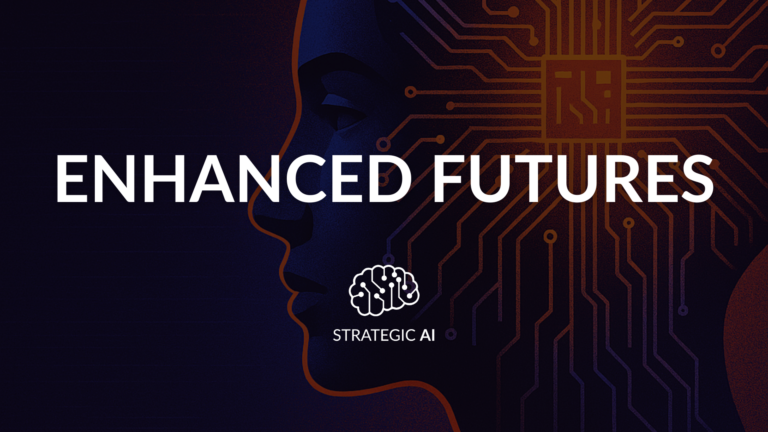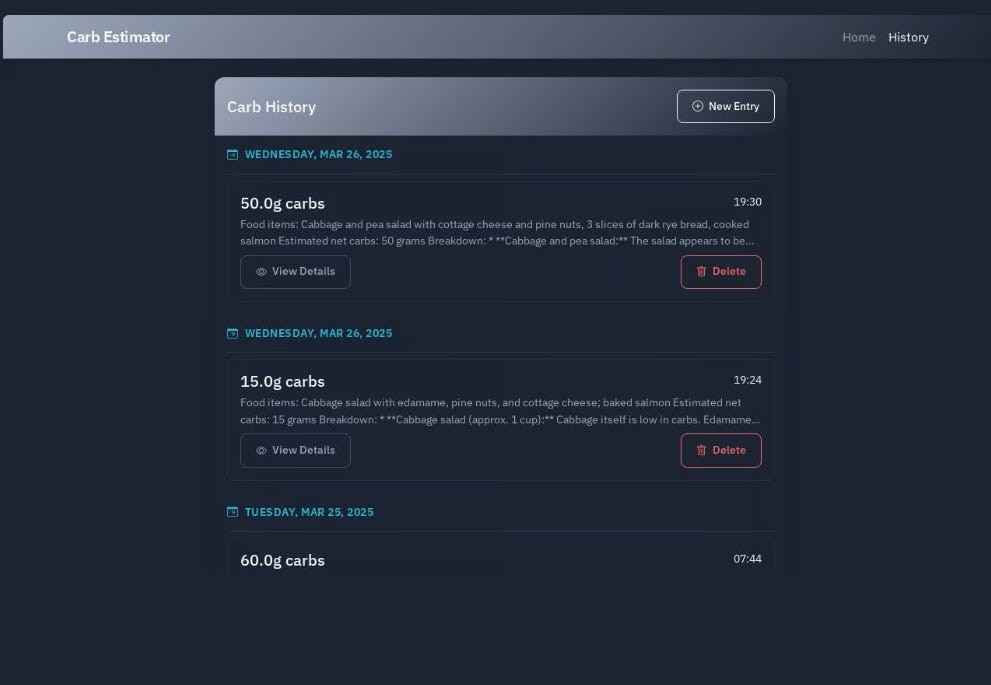
Written by Fola Yahaya
I’m not a conspiracy theorist, but in these troubling geopolitical times, I find myself increasingly open to previously improbable theories. On the AI front, it’s worth considering the possibility that the AI we’re currently experimenting with is vastly inferior to the mega cluster-powered AI systems available only to the world’s most powerful corporations and governments. Take Google, for example. It has access to our collective digital footprints – our searches, locations and preferences – and virtually every website is crawled by its bots. This illustrates the enormous power that Big Tech companies can wield when combining vast datasets with millions of processing chips.
In the video above, political commentator and journalist Ezra Klein and Ben Buchanan, a former AI adviser in the Biden White House, discuss the growing belief that superintelligent AI – systems potentially thousands of times smarter than ChatGPT – are either already here or rapidly approaching. Especially in the Trump/Musk era, AI is shifting from hype to reality, quickly becoming central to governance, society and defence. From Musk’s controversial proposals to replace civil servants with AI, to Big Tech’s pursuit of increased defence spending, we’re rapidly approaching a world dominated by AI.
So what does this mean for us? The uncomfortable truth is that nobody really knows. Just as the inner workings of today’s advanced AI remain somewhat opaque, the societal impacts of achieving true AGI are impossible to predict with certainty – particularly regarding labour markets, national security, cyber operations and societal structures. The leading AI research firm Anthropic recently identified “early warning signs” of AI systems exhibiting worrying capabilities in cybersecurity and biology, highlighting vulnerabilities in current alignment strategies. Miles Brundage, former policy lead at OpenAI, anticipates a “very serious incident” involving AI within the year, potentially causing billions in damage or even loss of life.
We do indeed live in interesting times…
Though a little dated, and with humour that’s very much of its time, the message at the heart of this darkly satirical film is that the marriage of seemingly smart systems and human fallibility can lead to catastrophic consequences. This has clear parallels with the increasingly close relationship between Big Tech and the defence sector, as the major powers aggressively up their AI spend in anticipation of a new kind of war. However, the voices raising legitimate concerns that autonomous AI systems could escape human control have all but been drowned out by governments, which have quietly shifted from a focus on AI safety to AI dominance. But does this matter? Just as we no longer fret about satnavs destroying our map-reading abilities, should we not just, to paraphrase Dr. Strangelove’s tagline, stop worrying and love AI?
My sense is that we should because, whether we like it or not, AI is already way smarter than us and is in the process of being embedded in everything from Big Mac delivery to axing inefficient civil servants. On a wider level, our current debt-fuelled, growth-obsessed, ‘free’ market approach to living is bad for most people and devastating for our planet – so something needs to change, and maybe that something is the ruthless transparency that AI brings to the nature and ultimately value of work.
By automating what the vast majority of people do in their offices, AI will force society to, very slowly and painfully, reframe what we should all really be doing with our very short time on this planet. So maybe we should view AI as a guardian angel of sorts – one that helps us understand how to best use our time and maximise our potential during our brief existence. A higher power that helps us overcome our cognitive blind spots and makes up for our natural tendencies toward procrastination, distraction and short-term thinking.
If we reframe AI in this way, it may allow us to use the shrinking window of pre-AGI (artificial general intelligence) opportunity to thoughtfully shape these technologies so they not only enhance our capabilities but also help us overcome our self-destructive tendencies – saving us from ourselves while preserving what makes us uniquely human. If we don’t, then we risk a similar outcome to Dr. Strangelove‘s cautionary tale, where our technological creations spiral beyond our control. Like the film’s unstoppable doomsday device, unaligned AI could trigger consequences we cannot reverse.
We’re currently recruiting for several positions, with a particular focus on finding someone to manage our portfolio of software products. Like many companies, we rely on LinkedIn, as it remains the most effective platform despite its obvious shortcomings, but we spend much of our time weeding out weak applications.
For example, of the approximately 320 applications we received for our Product Manager role, it was clear that the vast majority of candidates had blindly clicked the Easy Apply button and used ChatGPT to pimp their resumes. To filter this overwhelming number of applicants and identify genuinely interested candidates, we implemented a simple qualification step: we sent each applicant a link to schedule a brief 10-minute conversation about their interest in the position.
A hundred or so screening interviews later, and the results were illuminating. More than 35% of candidates weren’t fully aware of what position they had even applied for. Even more concerning, a staggering 60% couldn’t disguise their lack of knowledge about the product they would potentially be managing, with many visibly conducting hasty web searches during their interviews. Our experience has crystallised why I feel so many jobseekers struggle to secure positions. Rather than complaining about falling foul of the algorithm, they fail to do the basics. So in the spirit of paying it forward, here are our tips for job hunters on at least making the first cut when looking for work:
I can promise with absolute confidence that if you implement these straightforward practices, you will automatically position yourself in the top 5% of candidates. The bar is surprisingly low because so many applicants fail to execute these basic professional courtesies and preparation steps.
Taking a leaf out of Elon Musk’s DOGE playbook, the UK Government just announced plans to ‘mainline’ AI into every governmental process and drive annual savings of £45 billion. At the heart of this AI roll-out is Humphrey, an AI system that it is hoped will cut red tape and enable UK civil servants to be more efficient at executing processes (and ultimately automate themselves out of a job).
Whenever I hear of attempts to slim down bureaucracy I’m reminded of my stint as a very expensive management consultant. Even though I was but a freshly minted PhD with very little, if any, knowledge of the ways of the working world, I was regularly charged out at a ridiculous £1,200 per day. One of my first gigs was to work out how to re-engineer the antiquated UK Government’s ministerial correspondence process. Back in the 2000s, if anyone wrote a letter to a minister, the response had to be drafted by ministry officials, printed out for physical review and signature, then posted and routed through various departments for multiple rounds of sign-off. Alongside a team of five equally expensive consultants, I spent three months holed up in a windowless office literally mapping this process and in the process learning about how massively inefficient and costly it was. Needless to say, we were quick to recommend a digital solution to this stupidly manual process. I was off to my next consulting gig before the lengthy and equally inefficient procurement process to select a vendor was concluded, but I can guarantee that the final solution was just a digital version of a paper-based process.
Herein lies the problem. Rolling out AI to fix broken systems misses the point entirely. Instead of fixing or streamlining broken processes, AI becomes a shiny plaster over a gaping wound. The result? The same old problems – just processed quicker and spread wider. It’s also ironic that the UK Government has named its core AI system after a fictional civil servant from a long-running 1970s comedy series called Yes Minister. In this sitcom, Sir Humphrey is a senior civil servant notorious for preventing meaningful change, fiercely protecting bureaucratic traditions at all costs. Naming the heart of their digital transformation after such a figure suggests either a staggering lack of self-awareness or perhaps a knowing nod to the inertia deeply rooted within governmental bureaucracy.
You’d be hard-pressed to find any taxpayer (unless they’re a civil servant) who thinks their government shouldn’t be slimmed down and automated. But just as Elon Musk is discovering with his DOGE-fuelled ambitions, fighting the Sir Humphreys who resist the all too necessary cuts to civil service bloat will take more than AI – it requires fundamentally reimagining broken systems rather than simply digitising inefficiency. Without tackling the underlying bureaucratic culture that Sir Humphrey so perfectly embodied, the UK Government’s £45 billion savings target risks becoming yet another expensive consultation exercise that produces impressive PowerPoints but minimal change. The irony of naming their AI system “Humphrey” might be the most honest admission yet about the true challenges ahead.
As the ‘AI guy’ in my circle, I’m frequently asked about practical AI use rather than just theory. I’m painfully aware of how easy it is to get carried away and waste time and money on the latest new AI app or gadget. With subscriptions and token use costing around $50 per month, owning multiple tools quickly becomes expensive. Even worse are the seven day free trials that you forget to cancel and that continue their digital shakedown in the background.
So I thought it would be useful to track exactly how AI tools have either helped or hindered me this week. Below is a snapshot of my AI experiments:
Building a mobile app to take a picture and assess the amount of net carbs to allow me to correctly calculate an insulin dose for my son

Process: Signed up to Replit (a mobile, no-code app). Asked the AI bot all of six questions, plugged in my Google AI Studio API key to allow the AI to use my camera to assess carbs directly from images.
Converting Adobe XD animation to code (v0.dev)
Uploading my son’s exam timetable to Gmail (OpenAI Operator)
Building a prototype of a client data visualisation dashboard (v0.dev)



Hopefully these examples inspire you to try AI and understand its potential as well as its limitations.
Boston Dynamics released footage of its latest updated Atlas humanoid robot. Using reinforcement learning and with references from human motion capture and video, Atlas isn’t far off being battle-ready…
That’s all for this week. Subscribe for the latest innovations and developments with AI.
So you don’t miss a thing, follow our Instagram and X pages for more creative content and insights into our work and what we do.

Network Hub, 300 Kensal Road, London, W10 5BE, UK
We deliver comprehensive communications strategies that deliver on your organisation’s objectives. Sign up to our newsletter to see the highlights once a quarter.